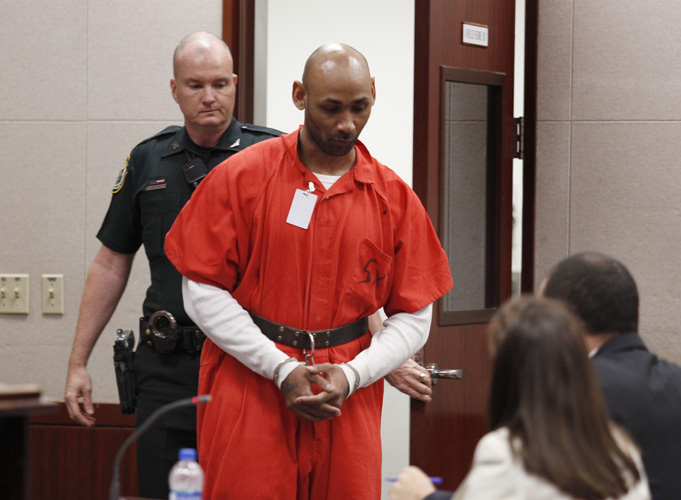
As the second trial of accused murderer Henry Lee Jones approaches, his lawyers are trying to suppress another potentially damning piece of evidence.
Two weeks ago, Jones’ attorneys asked Circuit Court Judge Daniel Vaughn to exclude evidentiary use of a motion filed by Jones in which he seems to admit killing Central Beach resident Brian Simpson in 2011.
This week Jones’ lawyers asked the judge to rule out use of data from a cell phone photo taken during an accidental “butt-call” by Jones that places him near the scene of the murder he’s charged with on the night the murder took place, arguing that the phone’s GPS is “not reliable.”
Vaughn, who listened to arguments from defense and state attorneys during a March 29 hearing, said he would issue a ruling this week, just days ahead of Jones’s trial, which is scheduled to begin Monday, April 8.
“Using the GPS coordinates from the defendant’s ‘butt-dial’ during the trial would be unfair to the defendant because the GPS on his phone is unreliable,” Assistant Public Defender Dorothy Naumann, who represents Jones, told Vaughn.
Naumann, and Assistant Public Defender Alan Hunt, based their argument on another photo found on Jones’ cell phone that contains incorrect data indicating where and when that photo was taken.
That photo appears to show a cut on someone’s leg that Naumann says was taken inside the bedroom of the Vero Beach house where Jones had been living. The GPS data states the photo was taken in Fort Pierce, Naumann pointed out.
During questioning, Michael Scott, a detective with the Indian River County Sheriff’s Office, told Naumann that several factors can affect the accuracy of GPS data. For example, the photo of the injured leg cited by Naumann was taken inside a house that had no Internet service.
That could account for the discrepancy between the GPS data stored in the phone and the actual location where the photo was taken, said Scott, a longtime digital forensic analyst.
The photo taken and transmitted accidentally while Jones’ phone was in his pocket the night of the murder, which shows a blank, dark image, was snapped near Riverside Park in Vero Beach in an area where Wi-fi reception is excellent, Scott said. It appears the photo was accidentally texted to someone soon after it was taken, he added.
Chief Assistant State Attorney Thomas Bakkendahl, argued that the “butt-shot” photo is relevant to the case because it was taken at 6:05 p.m., Nov. 17, 2011. The time, date and location would place Jones near murder victim Brian Simpson’s home on Fiddlewood Road close to the time he was killed.
Bakkendahl noted that the photo corroborates testimony given by several witnesses and other evidence that placed Jones in the same location the night of the murder.
The accidental photo was allowed as evidence during Jones first trial.
Jones, now 30, was convicted of first-degree murder in 2014 and received a life sentence. He was granted a second trial in 2017 after the fourth District Court of Appeals overturned his conviction. Justices argued that a new trial was warranted because Jones’ public defender was not allowed to question potential jurors about racial prejudice or bias. Jones is African-American, Simpson, 41, was white.



